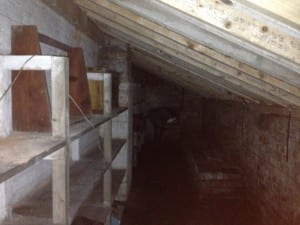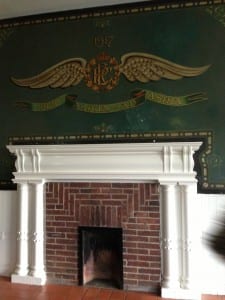‘I don’t particularly mind waste, but I think it’s a pity not to know what one is wasting. Some old ladies use pound notes as bookmarks: This is silly only if it is absent-minded.’ ((Brook, Peter (2008) The Empty Space, London: Penguin Classics, p. 45))
Walking through an open space, or down a street, the details are missed. Of course it’s not until you consciously look for something that you notice the details, the intricacies of both the man-made and the natural. You also begin to develop something seemingly uninteresting into an installation piece, or as if there was motive behind randomly placed coincidences. I guess we can all find art in anything; it’s how you perceive it.
Our first visit to the Grandstand conjured the same feeling: what was waste and what was wanted?
‘In what guise do I visit?’ ((Pearson, Mike (2010) Site-Specific Performance, London: Palgrave Macmillan, p. 19)), is a question Mike Pearson suggests asking oneself before visiting a site. As students, we have the intention and motive in finding potential for art, in a place that could have been previously neglected. An employee of Lincoln County Council guided us around the rooms of the Grandstand. He told us what he could about the history of the site, but seemed bemused by our excitement of the small, ostensibly insignificant, aspects to each room.
‘Yet with the freedom to loiter, to witness and interpret passing scenes and incidents, diverse activities, unpredictable juxtapositions, fleeting occurrences, multifarious sights and sounds… Gazing, grazing, consuming.’ ((Ibid, p. 20))
We all began finding interesting spaces, with the original architecture in mind; we could place performance and art within the existing walls. For example, the corridor below stretched along half of the length of the building. The natural darkness and eeriness invited the possibility of using projections, or introducing light in different ways to transform a corridor into a performance. The particular space is currently wasted. This allowed us to see a blank canvas for a performance potential.
One of the rooms in particular seemed to inspire and surprise all of us. The war memorial below encouraged a whole new strand to our ideas, originally thinking that horse racing would be at the forefront of our research and the final piece.
It was not long before we all felt passionate that the Grandstand deserved to have a voice returned to it. Another of Pearson’s questions to consider is: ‘am I simply enthralled by the place? Or is it difficult to know where it ends and I begin?’ ((Ibid, p. 21)) After I left the site I felt some sort of ownership and pride in the Grandstand, I was enthralled by it’s history and potential for our work. The whole site is wasted now, only used for the odd fitness class or brass band rehearsal- it is not being celebrated and treated with the grandeur it deserves; it is the gateway to Lincoln. It’s an exciting prospect to think that we will become part of its history.

